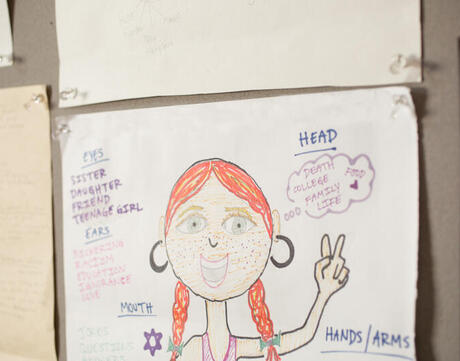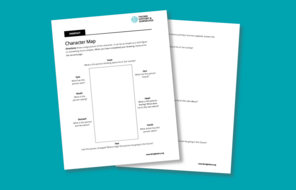
Teaching Strategy
Character Maps
Help students engage with a fictional or historical character by creating an annotated illustration.
At a Glance
Subject
- English & Language Arts
- History
- Social Studies
Grade
6–12Overview

Teaching Strategies
Use our student-centered teaching strategies to strengthen your students’ literacy skills, nurture critical thinking, and build a respectful and collaborative classroom community. These strategies can be paired with any academic content.
What Are Character Maps?
Character maps are graphic organizers that use a simple drawing of a person, with questions connected to the person’s symbolic features. They can be used to prompt reflection on historical or fictional characters.
Lesson Plans
How to Use Character Maps
Materials and Downloads
Quick Downloads
Download the files below.
Download the Files
Get Files Via Google
Unlimited Access to Learning. More Added Every Month.
Facing History & Ourselves is designed for educators who want to help students explore identity, think critically, grow emotionally, act ethically, and participate in civic life. It’s hard work, so we’ve developed some go-to professional learning opportunities to help you along the way.
Exploring ELA Text Selection with Julia Torres
On-Demand
Virtual
Listen to #DisruptTexts founder Julia Torres about taking a critical lens to text selection in ELA classrooms.

Working for Justice, Equity and Civic Agency in Our Schools: A Conversation with Clint Smith
On-Demand
Virtual
Listen to writer and educator Dr. Clint Smith as he shares his poetry and reflections on working for justice, equity, and civic agency in our schools.

Centering Student Voices to Build Community and Agency
On-Demand
Virtual
Explore approaches to centering student voice, building authentic relationships and cultivating community with Molly Josephs, the creator of This Teenage Life, a youth-driven, story-sharing podcast that started as a school club.

Most teachers are willing to tackle the difficult topics, but we need the tools.
—
Gabriela Calderon-Espinal, Bay Shore, NY














